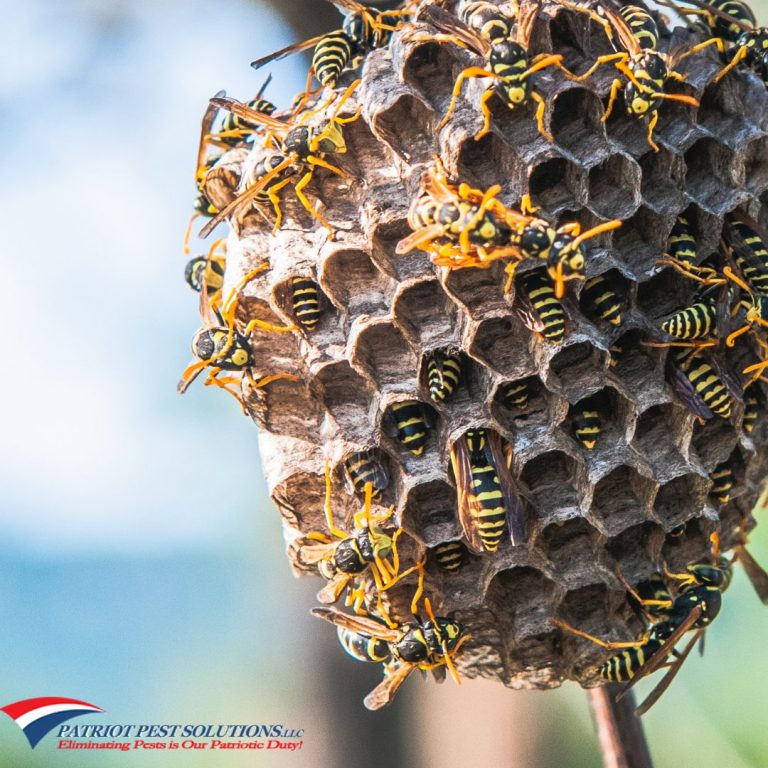Exploring Pennsylvania’s Wasp Species
Pennsylvania is home to a diverse range of insect species, including an impressive variety of wasps. While wasps may often be misunderstood and perceived as nuisances, they play a crucial role in maintaining ecological balance and can be intriguing creatures to observe. In this article, we will delve into the world of wasps in Pennsylvania, focusing on the notable wasp species to lookout for. Whether you’re a nature enthusiast, a curious observer, or someone who wants to better understand these remarkable insects, this guide is for you.
Wasp Species To Lookout For in Pennsylvania
Pennsylvania boasts an array of wasp species that exhibit unique characteristics and behaviors. Here are some of the most fascinating wasps you should keep an eye out for:
1. Bald-faced Hornet (Dolichovespula maculata)
The Bald-faced Hornet, also known as the white-faced hornet, is a common sight in Pennsylvania. Recognizable by its black body and striking white markings on its face and thorax, this large wasp constructs intricate papery nests often found hanging from tree branches or buildings. Though they can be aggressive when defending their nests, Bald-faced Hornets are valuable predators, controlling populations of other insects and maintaining a balanced ecosystem.
2. Paper Wasp (Polistes spp.)
Paper wasps are a group of wasp species known for their characteristic umbrella-shaped nests made from chewed plant fibers mixed with saliva. In Pennsylvania, you may encounter several species, such as the Northern Paper Wasp (Polistes fuscatus) and the European Paper Wasp (Polistes dominula). These wasps are generally docile unless their nests are threatened. Observing their nest-building behaviors and intricate social interactions can be an enthralling experience.
3. Eastern Cicada Killer (Sphecius speciosus)
The Eastern Cicada Killer is a large solitary wasp that preys on cicadas. Females dig burrows in sandy soil, paralyze cicadas with venom, and lay eggs on the immobilized prey. Although their size and behavior may appear intimidating, male cicada killers do not possess stingers, and females are rarely aggressive towards humans. Witnessing their hunting strategies and observing their preference for certain cicada species can be a fascinating study.
4. Great Golden Digger Wasp (Sphex ichneumoneus)
The Great Golden Digger Wasp is a visually striking wasp with a shiny golden appearance. They are known for their exceptional hunting skills, as they paralyze grasshoppers and crickets to provide food for their offspring. These wasps construct underground nests, often in sandy or loamy soil. Witnessing their precision in locating prey and their delicate nest-building process can be an awe-inspiring encounter.
5. Potter Wasp (Eumenes fraternus)
Potter wasps are solitary insects that construct vase-like nests using mud or clay. The Potter Wasp’s nest, resembling a tiny pot, typically houses a single larva. These wasps are known for their meticulous nest-building process and exceptional hunting abilities. They capture and paralyze spiders, which serve as a vital source of food for their offspring. Spotting a Potter Wasp’s intricate nest and observing its foraging techniques can be a remarkable experience.
6. Velvet Ant (Dasymutilla spp.)
Despite its name, the Velvet Ant is not an actual ant but a flightless wasp. These solitary wasps are known for their dense, velvety hair and vibrant colors, such as black, red, or orange. The females lack wings and are capable of delivering a painful sting if handled or threatened. While observing these wasps from a safe distance, their unique appearance and behavior can captivate any nature enthusiast.
7. Eastern Yellowjacket (Vespula maculifrons)
The Eastern Yellowjacket is a wasp species with distinct black and yellow markings. They are social insects that construct papery nests underground or in enclosed spaces such as attics or wall voids. These wasps can be aggressive when their nests are disturbed, making it essential to exercise caution around them. Understanding their nesting behaviors and the role they play in the ecosystem is crucial for peaceful coexistence.
8. Blue Mud Dauber (Chalybion californicum)
The Blue Mud Dauber is a solitary wasp known for its vibrant metallic blue-black coloration. They construct tubular nests using mud, often attaching them to vertical surfaces like walls or rocks. Blue Mud Daubers are beneficial predators that hunt spiders, paralyze them, and store them as food for their larvae. Observing their nests and witnessing their hunting prowess can be an intriguing experience.
9. Red Paper Wasp (Polistes carolina)
The Red Paper Wasp is a social wasp species commonly found in Pennsylvania. They build open, umbrella-shaped nests with exposed cells. These nests can be attached to structures, tree branches, or other elevated locations. Red Paper Wasps are not typically aggressive but may sting if they feel threatened. Exploring their nesting behaviors and observing their interactions within the colony can provide valuable insights into their social structure.
10. Thread-waisted Wasp (Ammophila spp.)
Thread-waisted wasps are solitary insects known for their distinct, slender waist and elongated hind legs. These wasps are exceptional hunters, capturing various prey, including caterpillars, spiders, and insects, which they paralyze before laying their eggs. Observing their hunting techniques and understanding their role in controlling pest populations can be a fascinating study.




